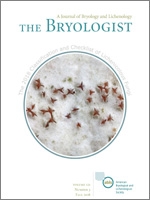Nuclear ribosomal internal transcribed spacer (ITS) region is well-established as universal DNA barcode marker for Fungi. Here we examined the utility of DNA barcoding for delimiting species in lichenized Basidiomycota from Colombia, focusing on the genus Sulzbacheromyces (Lepidostromatales). The topology of the best-scoring maximum likelihood tree based on ITS data shows eight separate, well-supported lineages within Sulzbacheromyces, including the six already known species S. caatingae from Brazil, S. miomboensis De Kesel & Ertz from Africa, and S. bicolor, S. fossicola, S. sinensis, and S. yunnanensis from Asia. In addition, two further, sympatric and semi-cryptic species from the Chocó Biogeographic Region, one of the most diverse regions of the world, are recognized: S. chocoensis Coca, Lücking & Moncada sp. nov and S. tutunendo Coca, Lücking & Moncada sp. nov. Both form separate, strongly supported species-level lineages, but differ morphologically from each other and from S. caatingae in minor details only, which are best assessed with fresh material in the field.
How to translate text using browser tools
31 August 2018
Two new, sympatric and semi-cryptic species of Sulzbacheromyces (Lichenized Basidiomycota, Lepidostromatales) from the Chocó Biogeographic Region in Colombia
Luis Fernando Coca,
Robert Lücking,
Bibiana Moncada
ACCESS THE FULL ARTICLE

The Bryologist
Vol. 121 • No. 3
Fall 2018
Vol. 121 • No. 3
Fall 2018
basidiolichens
cryptic speciation
ITS barcoding
maximum likelihood
phylogeny




